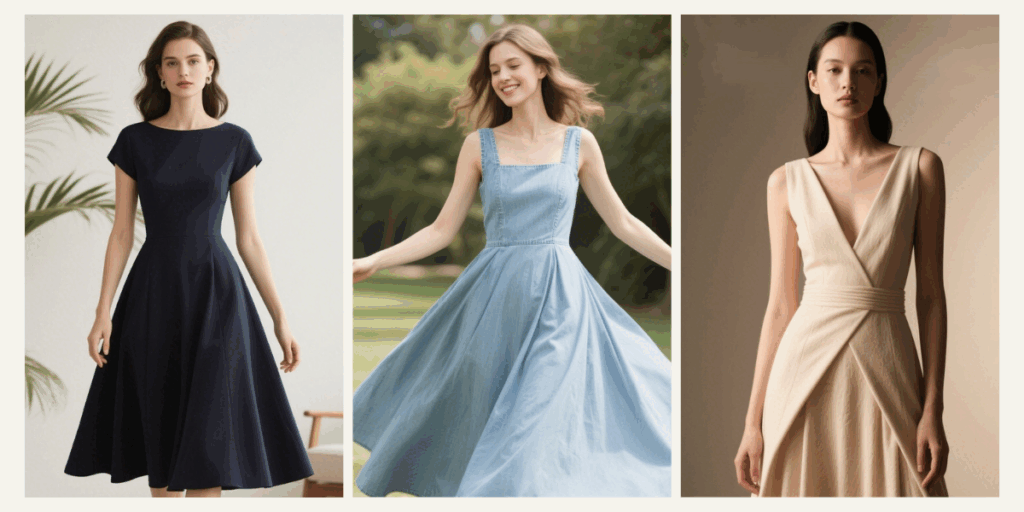You’ve probably heard the term “A-line dress” tossed around in fashion talk, but what does it actually look like—and how do you spot one on the rack or online? Whether you’re dressing for a casual day out, a romantic dinner, or a job interview, the A-line dress is your stylish best friend. It flatters many body shapes and suits nearly every occasion.
Here’s a creative and detailed guide to help you easily identify an A-line dress—plus some tips on how to style it like a pro.
1. Look for the Signature Shape – Think of the Letter “A”
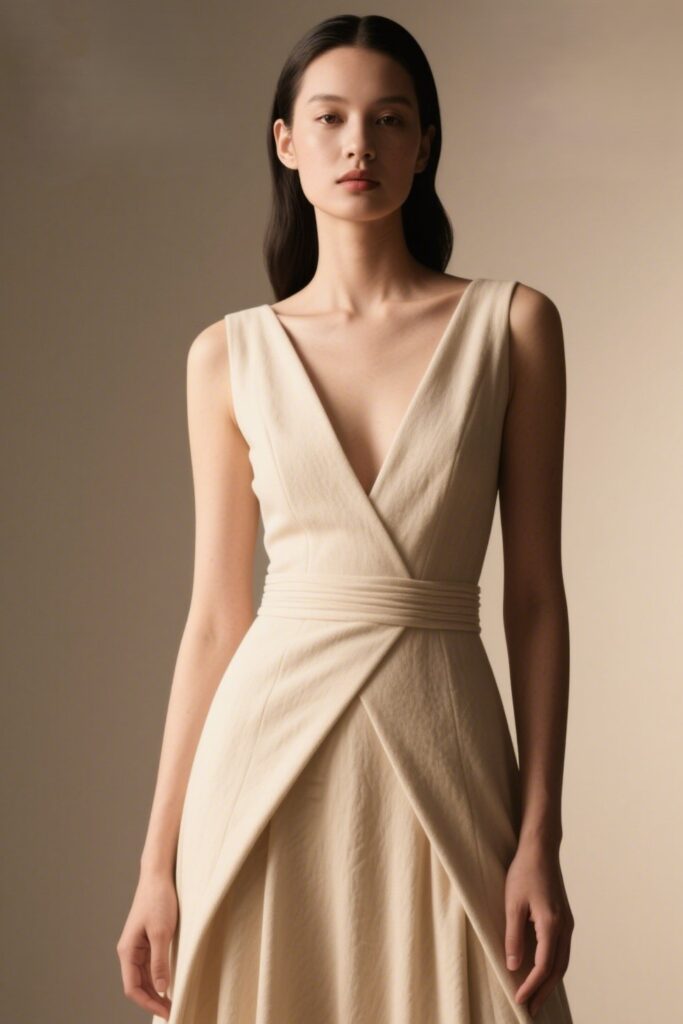
How to spot it:
The A-line dress gets its name from its silhouette: narrow at the top, gradually flaring out towards the hem—just like a capital “A”. It usually fits snugly at the shoulders and bodice, then softly widens from the waist down without clinging to the hips.
Where to check:
Focus on the waist. If the dress cinches or hugs the waistline and then flows outward into a triangle shape, it’s likely an A-line.
2. Check the Fabric Flow – Structured but Easy
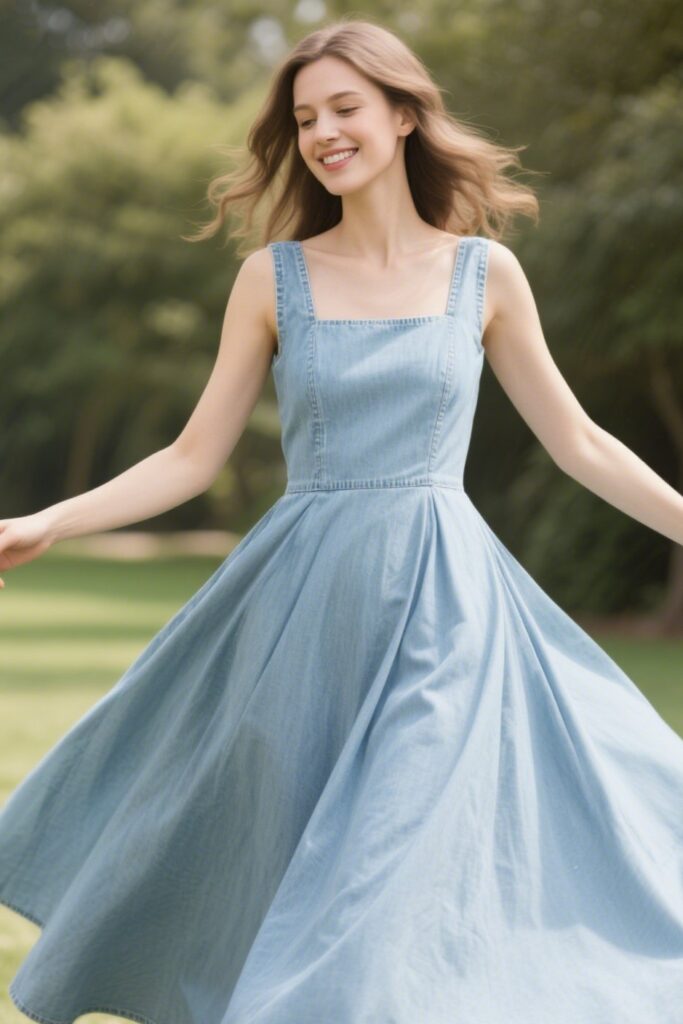
How to spot it:
A-line dresses often feature fabrics that hold a bit of shape—like cotton, denim, taffeta, or light twill—but they aren’t stiff like ball gowns. The skirt has gentle movement without too much volume.
Pro tip:
Twirl in it. If the skirt swings gracefully without ballooning, it’s probably A-line. Too poofy? That’s veering into fit-and-flare territory.
3. Watch the Hemline – Classic and Balanced
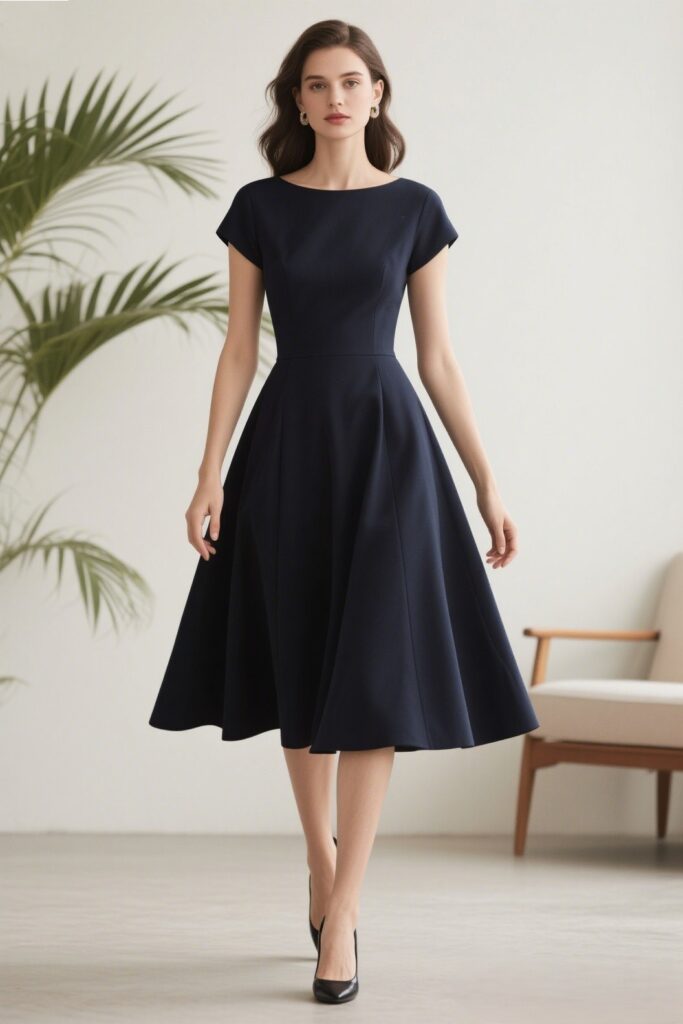
How to spot it:
The hem of an A-line dress typically falls anywhere between mid-thigh to ankle-length, maintaining that gradual flare throughout. Mini A-lines give a mod, retro vibe, while midi and maxi versions exude elegance.
Where to check:
Is the bottom noticeably wider than the waist, but not dramatically so? That balanced flare is a hallmark of the A-line.
4. Feel the Fit – No Cling, No Bulk
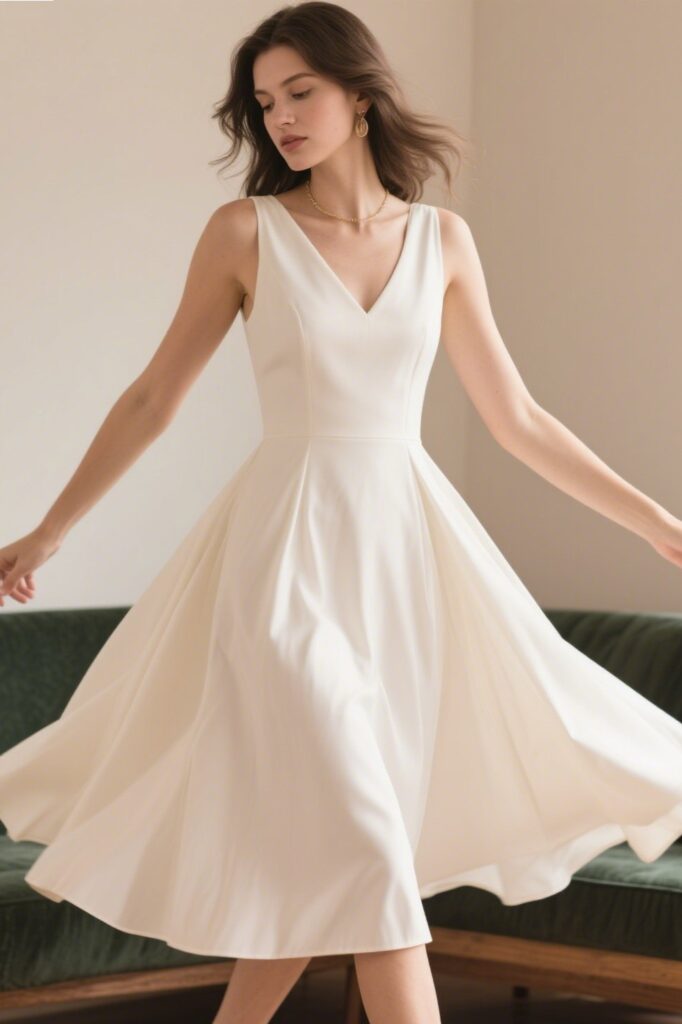
How to spot it:
A-line dresses are known for their ease of wear. The bodice may be fitted or relaxed, but the skirt will never be clingy or excessively layered. It glides over your lower half without clumping or sticking.
Try this:
If you can sit, walk, or dance in it without adjusting or smoothing constantly, that’s A-line comfort at work.
5. Spot the Versatility – It Suits Everyone
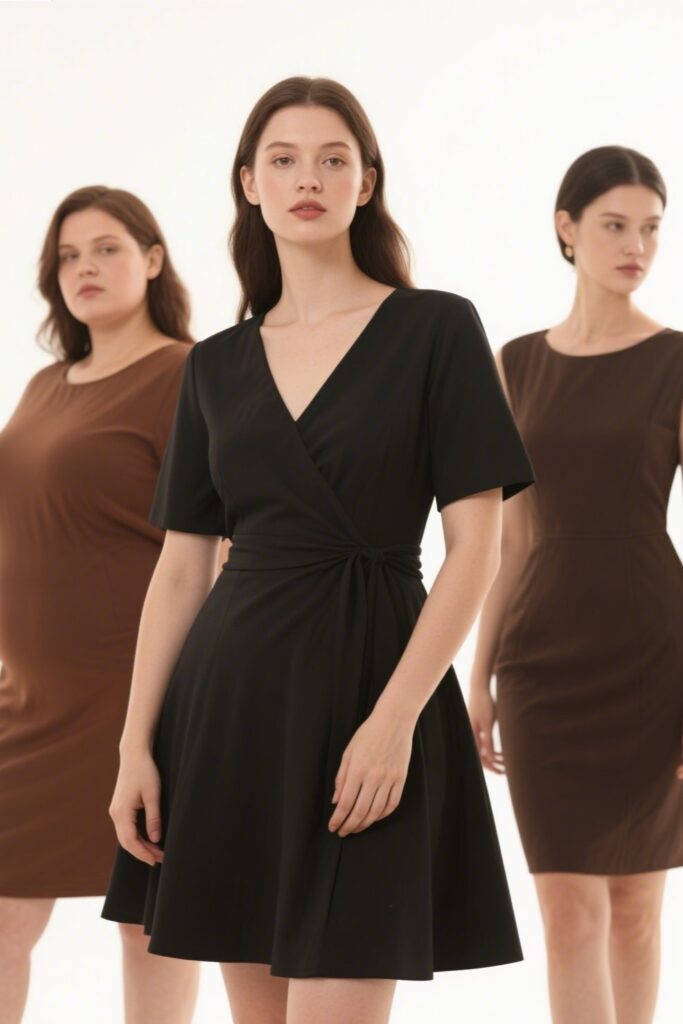
Why it matters:
The A-line shape is one of the most universally flattering cuts. Whether you have a pear, apple, rectangle, or hourglass figure, the A-line dress enhances or softens curves in the right places.
How to style it:
- For curves: Pick an A-line with a cinched waist to highlight your hourglass shape.
- For petite frames: Go for shorter hemlines and V-necks to elongate the body.
- For fuller hips or thighs: The flared skirt balances proportions without drawing attention.
Final Words: If It Feels Easy and Looks Effortless, It’s Probably an A-Line
Next time you’re shopping or browsing online, use this visual: draw a mental triangle from your shoulders down to your knees. If the dress fits that image—tapered at the top and widening below the waist—you’re looking at a classic A-line.
A-line dresses are like the jeans of the dress world: reliable, versatile, and endlessly stylish. Once you learn to recognize them, you’ll start spotting them everywhere—from bridal boutiques to weekend markets.
